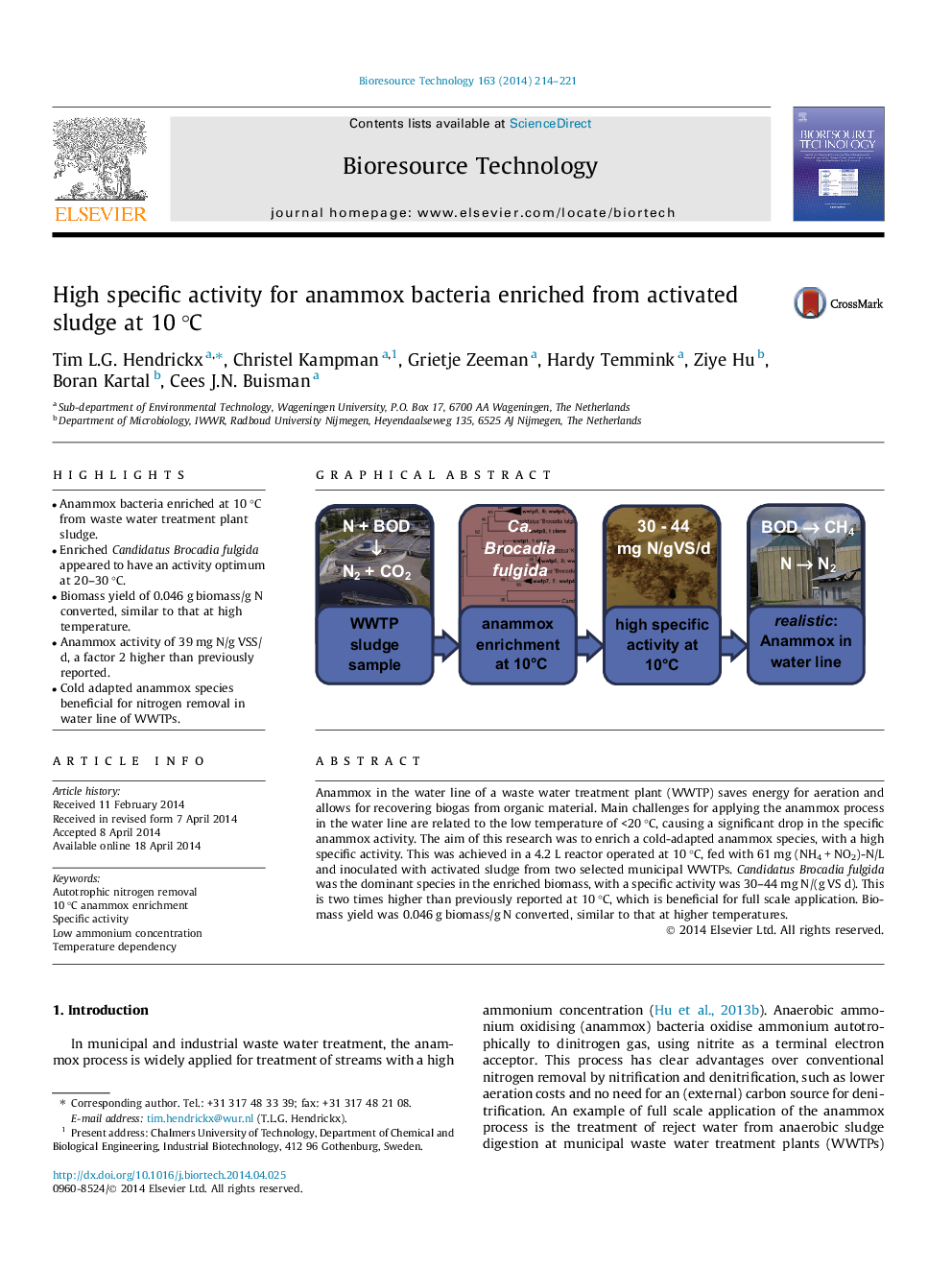| Article ID | Journal | Published Year | Pages | File Type |
|---|---|---|---|---|
| 680848 | Bioresource Technology | 2014 | 8 Pages |
•Anammox bacteria enriched at 10 °C from waste water treatment plant sludge.•Enriched Candidatus Brocadia fulgida appeared to have an activity optimum at 20–30 °C.•Biomass yield of 0.046 g biomass/g N converted, similar to that at high temperature.•Anammox activity of 39 mg N/g VSS/d, a factor 2 higher than previously reported.•Cold adapted anammox species beneficial for nitrogen removal in water line of WWTPs.
Anammox in the water line of a waste water treatment plant (WWTP) saves energy for aeration and allows for recovering biogas from organic material. Main challenges for applying the anammox process in the water line are related to the low temperature of <20 °C, causing a significant drop in the specific anammox activity. The aim of this research was to enrich a cold-adapted anammox species, with a high specific activity. This was achieved in a 4.2 L reactor operated at 10 °C, fed with 61 mg (NH4 + NO2)-N/L and inoculated with activated sludge from two selected municipal WWTPs. Candidatus Brocadia fulgida was the dominant species in the enriched biomass, with a specific activity was 30–44 mg N/(g VS d). This is two times higher than previously reported at 10 °C, which is beneficial for full scale application. Biomass yield was 0.046 g biomass/g N converted, similar to that at higher temperatures.
Graphical abstractFigure optionsDownload full-size imageDownload as PowerPoint slide
